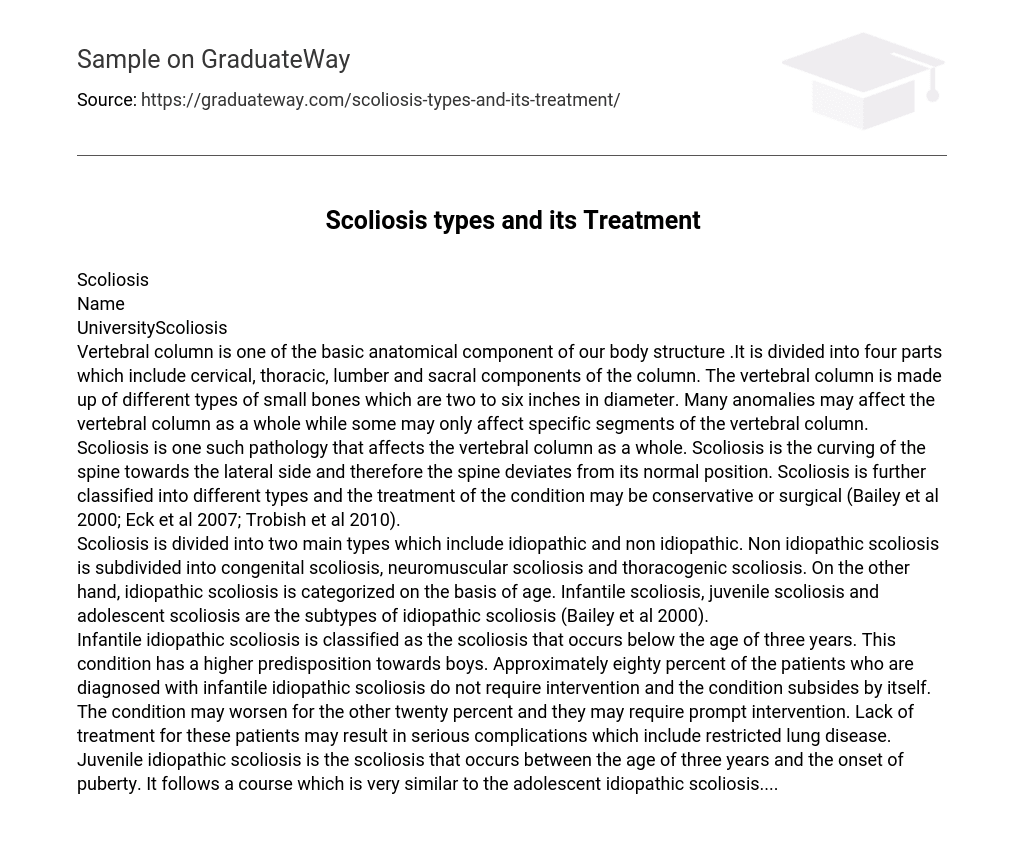Vertebral column is one of the basic anatomical component of our body structure .It is divided into four parts which include cervical, thoracic, lumber and sacral components of the column. The vertebral column is made up of different types of small bones which are two to six inches in diameter. Many anomalies may affect the vertebral column as a whole while some may only affect specific segments of the vertebral column. Scoliosis is one such pathology that affects the vertebral column as a whole.
Scoliosis is the curving of the spine towards the lateral side and therefore the spine deviates from its normal position. Scoliosis is further classified into different types and the treatment of the condition may be conservative or surgical (Bailey et al 2000; Eck et al 2007; Trobish et al 2010). Scoliosis is divided into two main types which include idiopathic and non idiopathic. Non idiopathic scoliosis is subdivided into congenital scoliosis, neuromuscular scoliosis and thoracogenic scoliosis. On the other hand, idiopathic scoliosis is categorized on the basis of age.
Infantile scoliosis, juvenile scoliosis and adolescent scoliosis are the subtypes of idiopathic scoliosis (Bailey et al 2000). Infantile idiopathic scoliosis is classified as the scoliosis that occurs below the age of three years. This condition has a higher predisposition towards boys. Approximately eighty percent of the patients who are diagnosed with infantile idiopathic scoliosis do not require intervention and the condition subsides by itself. The condition may worsen for the other twenty percent and they may require prompt intervention. Lack of treatment for these patients may result in serious complications which include restricted lung disease.
Juvenile idiopathic scoliosis is the scoliosis that occurs between the age of three years and the onset of puberty. It follows a course which is very similar to the adolescent idiopathic scoliosis.





